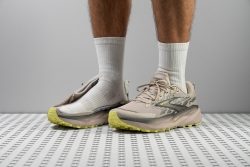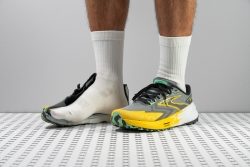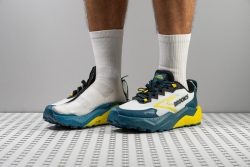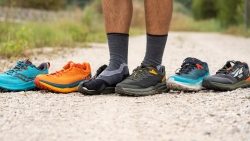3 Best Brooks Trail Running Shoes in 2025

We buy shoes ourselves. We earn commissions when you buy through us, at no extra cost. Why trust us
Brooks has made a name in the running world. It’s given us some of the best road running shoes, and it sure didn’t let us down with its trail shoes.
Among all the running shoes we’ve tested, nothing comes close to Brooks trail shoes in the durability department. Even better, they’re supportive and grippy, it’s hard to lose your steps in them.
But in order to get the best of the best, we acquired trail running shoes from the brand and tested them until they were literally broken into pieces. We tackled various terrains in them before we concluded which ones impressed us the most.
How we test Brooks trail running shoes
Every shoe on this list, we’ve examined down to the nitty-gritties. We also have our own RunRepeat shoe testing lab where we conduct these tests. And before we do the following, we always make sure to buy each shoe with our own money. We give ourselves no reason to be partial to any brands as we give you more reason to trust us.
What happens in our scrutinization process is:
- We run in the shoes for a minimum of 30-50 miles. We approach difficult terrains in different conditions. We observe all the abilities and inefficiencies of the shoes, and we delve deeper by evaluating them down to specifics like fit, comfort, grip, support, and more.
- We slice them into bits. We measure each part via 30 different parameters like lightness, breathability, flexibility, etc.
Best Brooks trail running shoes overall
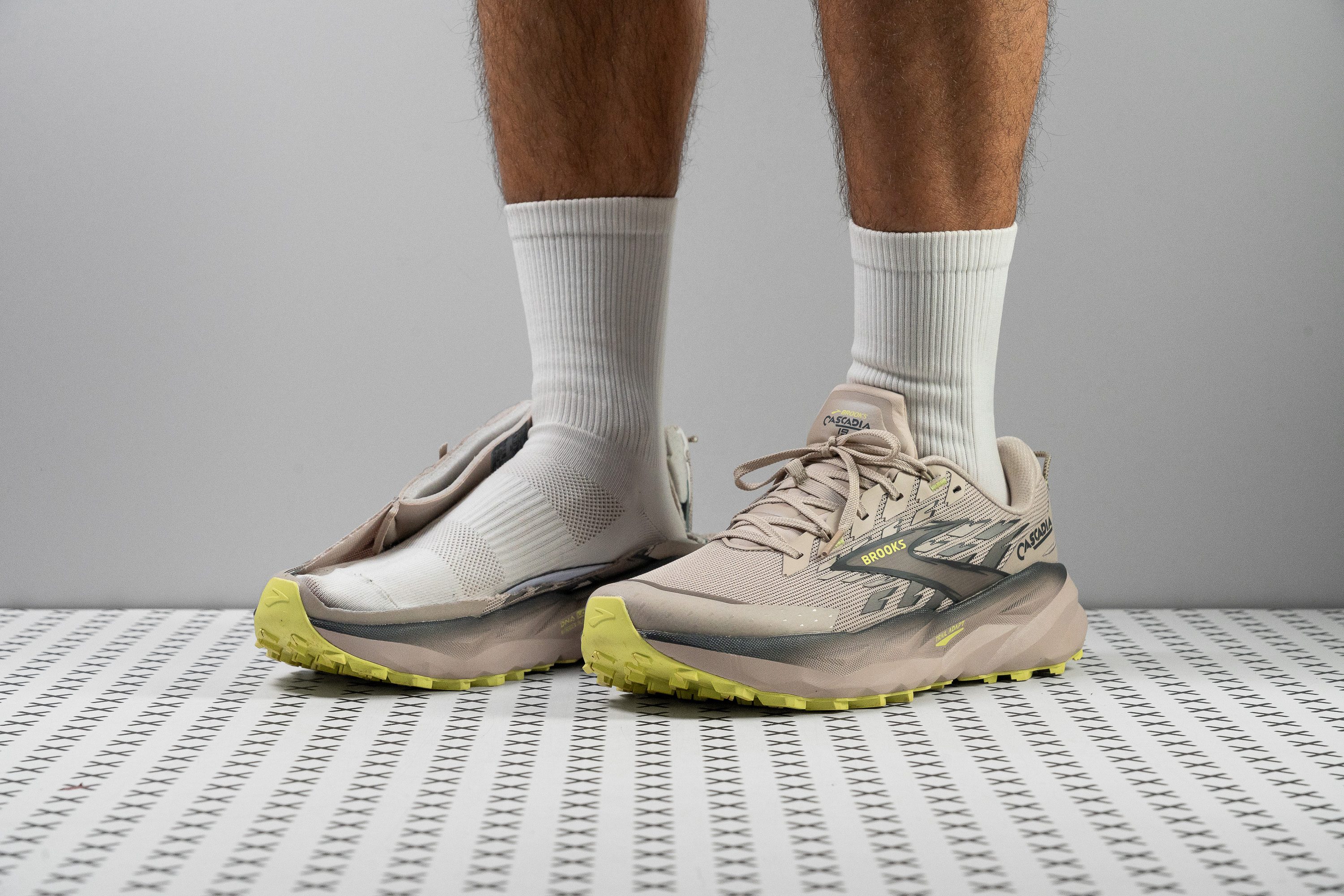















































What makes it the best?
Among all Brooks trail running shoes we’ve tested, Cascadia 19 established its dominance on off-the-beaten paths. Together with its well-designed lugs and Trail Adapt system, this workhorse has unmatched versatility across mixed terrains and weather. On top of this, it offers out-of-this-world breathability!
We navigated through steep and uneven paths with a high level of agility thanks to the moderately-sized 3.8 mm lugs. They are designed with intention, varying in shape and size to serve their purpose better. The set in the rear is used for brakes, the midfoot for shedding water and debris, and the forefoot for enhanced grip on ascents.
The Trail Adapt system stabilizes our strides and protects us from underfoot debris. The sensation underfoot feels firm, translating to a consistently steady ride even on rough terrains. Another feature that enhances stability is the vast landing platform, with caliper measurements of 121.5/101.3 mm.
We gave the upper a 4/5 on our breathability test as it performed impressively compared to the typical trail shoe, keeping our feet refreshed even on sunny days.
Cascadia 19’s focus on protection and stability gave up the plush cushion that some runners prefer. We recommend exploring other options if comfort is the top priority.
Pros
- Softer, more responsive DNA Loft v3 foam
- Outstanding stability
- Enhanced flexibility
- Highly versatile for both running and hiking
- Reliable traction
- Well-crafted, plush tongue
- Excellent outsole durability
- Best Cascadia to date
- Good airflow
Cons
- Still on the heavier side
- Narrow toebox limits toe splay
- Slight price increase
Best lightweight Brooks trail running shoes
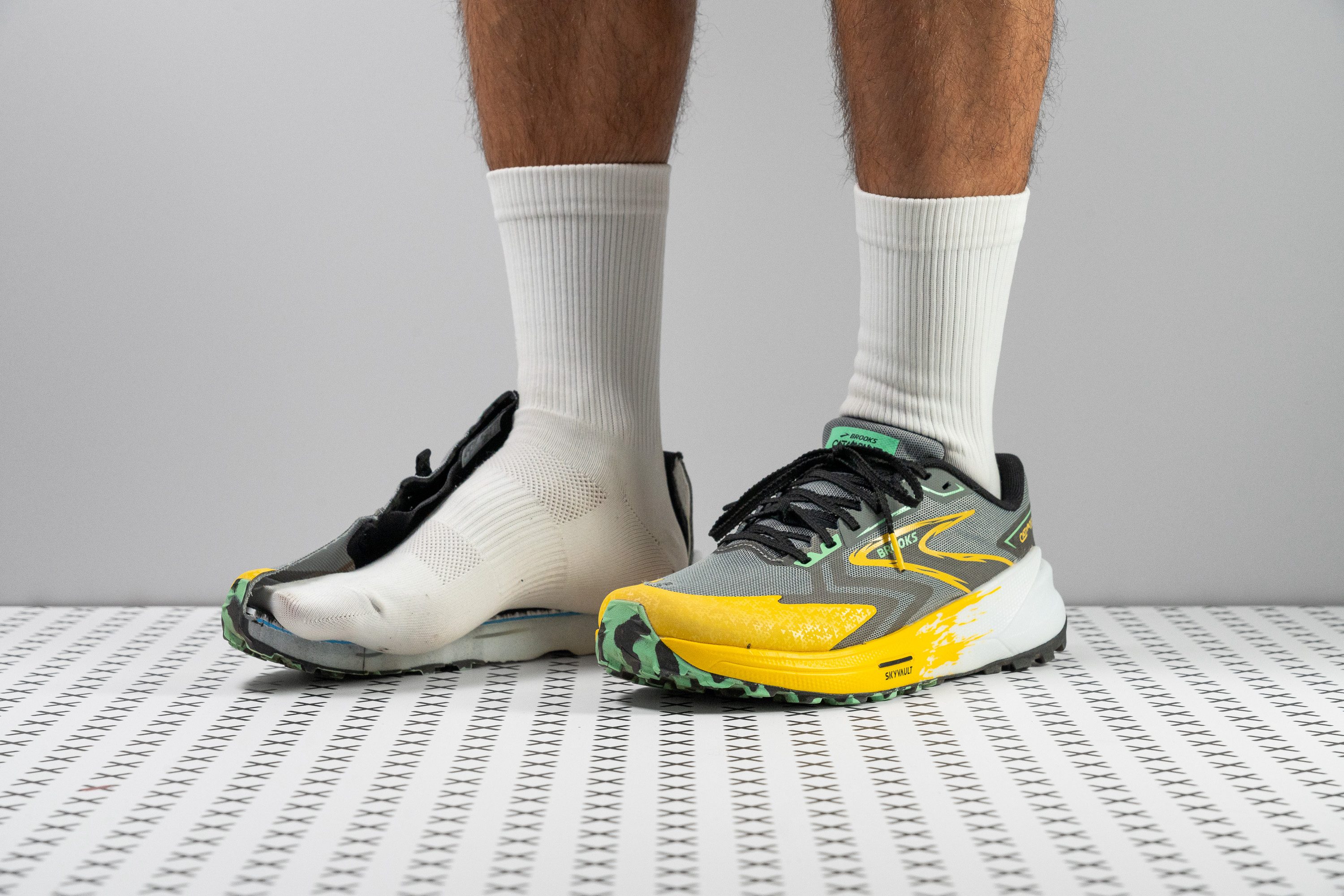


















































What makes it the best?
The Catamount 3 defies traditional trail shoes, delivering unmatched versatility in our lab tests and runs. It's our top lightweight Brooks trail shoe, combining agility and stability in a remarkably airy package, which makes it a great performer across various speeds and distances.
Catamount 3 melts away on our feet and our scales confirm its weightlessness at 9.0 oz (255g), 13.0% lighter than the average trail shoe. This is attributed to its below-average stack, which our caliper measures at 28.3/21.5 mm, giving us a heightened surface connection.
The highlight of the Catamount 3 is the DNA Flash midsole, which provides exceptional support. Despite a softer-than-average 20.4 HA reading on our durometer, the ride feels balanced and snappy. Cutting the shoe open reveals a Skyvault plate in the forefoot, which serves as a rock plate and enhances stability and bounce. Since it doesn't extend to the heel, the Catamount 3 remains 21.3% more flexible than average, effortlessly adapting to technical terrain.
Underfoot, the TrailTack Green outsole delivers a good mix of grip and durability. Its 2.9 mm lugs are the perfect depth for a smooth and fast ride. Our durometer confirms its hardness is at par with average, erasing any concerns about premature wear.
However, the upper has dense multi-layered mesh and reinforcements that hamper airflow. Those who run in warmer weather should explore more breathable options.
Pros
- Reduced weight from v2
- Enhanced flexibility
- Stable and secure ride
- High-quality materials
- Suitable for all footstrikes
- Lightweight!
- Fantastic Skyvault plate
- Adaptable across various paces
Cons
- Poor upper ventilation
- Tight fit for some
- Limited grip in wet conditions
Brooks trail running shoes with the best shock absorption
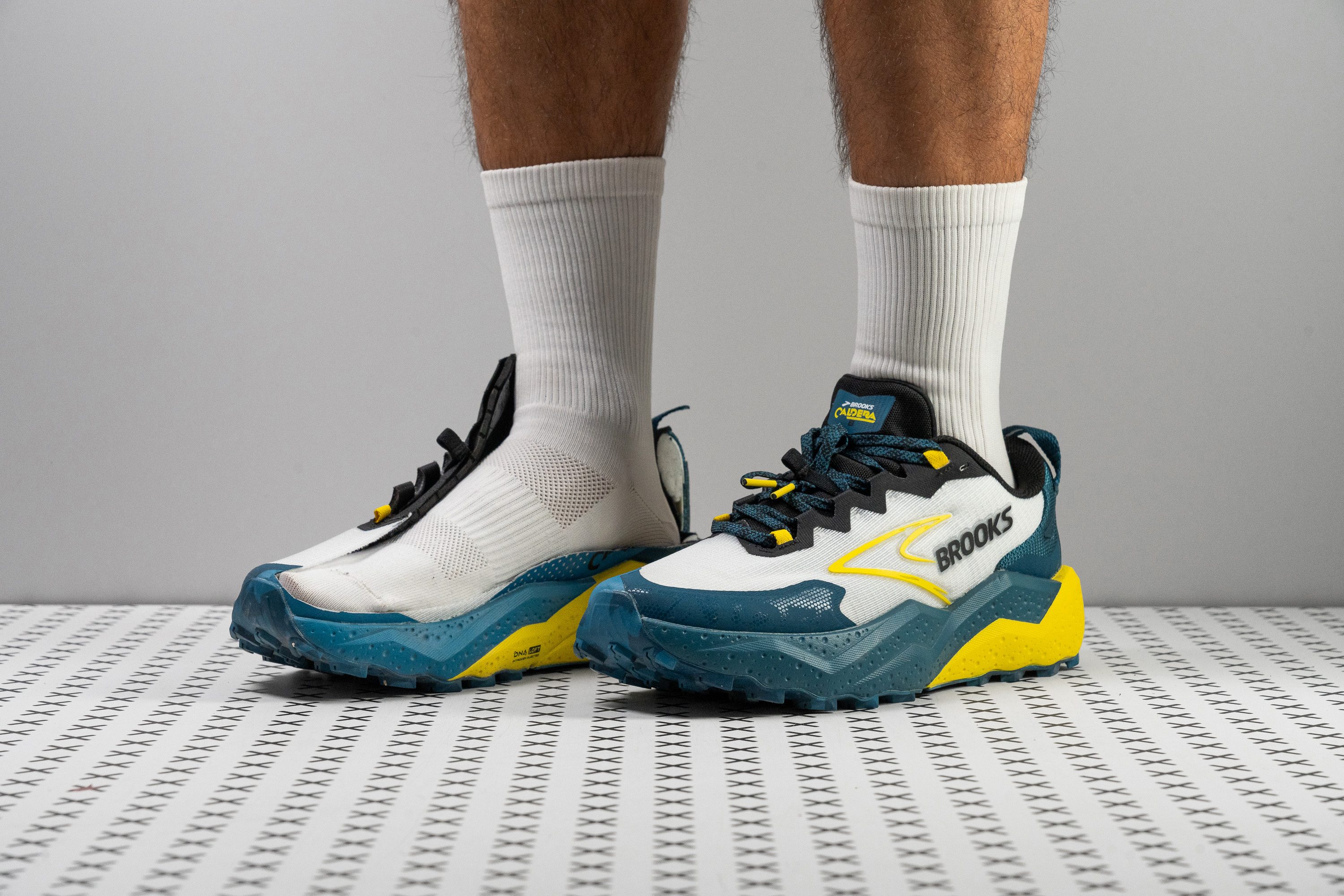














































What makes it the best?
Upon repetitive wear, we could feel the Caldera 8 taking care of our leg muscles, offering the best shock absorption among all the Brooks trail running shoes we tested in and out of the lab. This shoe serves protected landings, reliable traction, and a stable ride—creating a smooth and relaxed experience in easy-to-moderate terrains.
We found Caldera 8 suitable for laid-back days. At 36.7/27.9 mm, it reduces landing impact, making endurance runs less taxing on our legs. Additionally, our shock absorption test reveals a high score of 129/111 SA in the heel and forefoot, respectively, proving the relief we experienced.
Despite its plush sensation, the ride feels remarkably stable. We credit the midsole sidewalls that guide our foot alignment, the high torsional rigidity (5/5) for steady support, and its extensive landing base. This shoe is one of the widest we’ve seen at 116.6/104.0 mm, notably its heel, which is 14.3 mm wider than average!
Moving to the outsole, we're relieved of Caldera’s traction in various conditions. After our traction test, we found that it offers a dependable grip of 0.59, further assisted by 3.6 mm lugs that feel versatile on more technical sections.
Because of its wide dimensions, Caldera 8 feels like a bulky SUV. Those who prefer more agility for twisty trails should go for a more fluid and compact shoe.
Pros
- Outstanding stability
- Comfortable, smooth ride
- Versatile on easy and moderate terrain
- Secure, reliable lockdown
- Fair and reasonable price
- Dependable traction
- Cleaner, more refined look
Cons
- Still heavy
- Needs more cushioning
- Bulky, overly wide heel
- Only for slow paces

